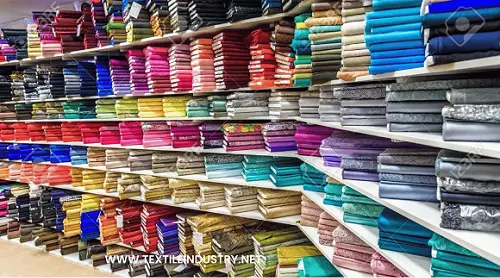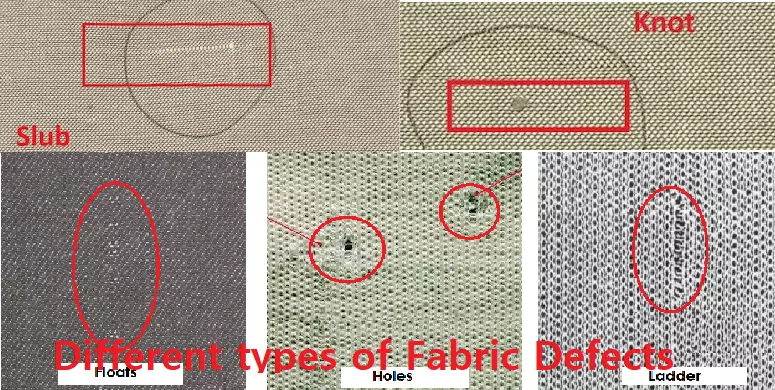Fabric stores typically organize fabrics by fiber content, color or print, and weight. Some stores may also organize by intended use, such as quilting or apparel fabric. also offer sorting services, so it may be worth checking out what is available in your area. Additionally, many online fabric stores offer sorting options as well. Find them out on the internet. Speaking of which, check out Windstream Internet service for a reliable internet service for all your online needs. So Here I present 9 Reasons Why We Need to Sort Our Fabric Store NOW.
More than 70% of the entire cost of the outfit goes toward fabric expenses. So, it should go without saying how important it is for the manufacturing process to have efficient fabric storage and administration. A fabric shop at a garment factory is essential to the process of making clothes since it not only gives the firm a place to store its inventory of raw materials but also functions as a station for inspecting fabrics.
So, a very well fabric store becomes crucial to guaranteeing more effective production operations. The manufacturer can profit in a variety of ways from maintaining a well-organized fabric store.

What are 9 Reasons Why We Need to Sort Our Fabric Store?
- Time Management
- Space Management
- Demarked area for freshly arrived fabric
- Indexing System of the stored fabric rolls
- Space for relaxation
- Capacity Augmentation
- Inventory Management
- Information Management
- Efficient Fabric Inspection Process.
1. Time Management
A sorted fabric store gives you incredibly clear visibility into the stock that is present at each checkpoint, which in turn enables the store manager to coordinate internal tasks like GRN entry, physical checking against stock received from suppliers, fabric inspection and relaxation, segregation according to production requirements, and indexing for easy finding.
Finding the materials available takes less time in an organized fabric store. Locating the rolls in the store becomes much easier and takes much less time whenever the fabric store is well-organized, standardized, and clean. This reduces the time it takes the employees of the fabric store to distribute the rolls just on the floor and reduces the need to rely on a certain individual to locate their stock. Hence, standardization and organization in fabric storage improve the effectiveness and efficiency of the shop.
Furthermore, swept floors, dusted shelves, and spotless counters make the store environment professional, guard against fabric damage, and promote the further organization in how the staff stores roll.
2. Space Management
As they don’t directly contribute to the revenue generated, running fabric stores is an expensive endeavor for the factory. A sizeable portion of capital is made up of the costs of land, infrastructure, equipment, labor, and raw materials that are all stored together. Factories can trim down these costs and perk up their efficiency by maximizing their space utilization in the fabric store, ensuring the following things:
3. Demarked area for freshly arrived fabric:
The fabric is unloaded at the fabric store after it is delivered to a manufacturer. All of the fabric rolls should be tallied and cross-checked against the invoice that was received from the supplier as soon as the fabric is unloaded. Also, each roll that is received should have its head ends randomly checked to ensure that the supplier tags are still attached. The fabric should subsequently be kept in the quarantine area according to the order of inspection. This prevents the cloth from being misplaced.
4. Indexing system of the stored fabric rolls:
Every factory has a different indexing scheme. Depending on the fabric type, order requirements, etc., it could change. After the fabric has been examined, it should be indexed, with the order requirements and its precise placement being documented. The storekeeper can manage his inventory and space according to internal processes with the aid of suitable indexing.
Finding the cloth in the fabric store is much easier as a result. Also, this makes it easier for other departments like cutting and sampling to identify the appropriate cloth with the least amount of effort.
5. Space for relaxation:
This is also important that fabric relaxation can help in the store process. It is an added process that takes time. But it should be placed in an isolated area with the marking of fabric relaxation. Employees working in the store room must have to know about the procedure. A time and SOP set there to control all these things.
Improved space usage in the store results from organized storage. Using space effectively not only reduces storage needs but also cuts down on time wasted searching for rolls, which increases labor costs. Also, it aids the plant in avoiding pointless pauses in the loading and unloading of trailers.
6. Capacity Augmentation
Knowing the capacity of the area, a calculation of accommodation helps the sorting. Capacity setting according to sort is the best way to store fabric. This opens the gates for the factory to better analyze its current capacity and its ability to increase its capacity.
As was said in the previous paragraph, effective indexing gives the freedom to plan capacity consumption ahead of time. You know the answers to queries like what fabric will be used when and where in the store there will be space for the new fabric to be allocated. You will essentially have a timeline for each fabric.
A factory with an organized fabric store is better equipped to manage larger orders and a considerably larger inventory. As a result, a well-run fabric store gives the garment manufacturer the chance to plan its expansion with extra investments that are solely or primarily focused on the store’s labor and equipment needs.
7. Inventory Management
Finding the ideal inventory level is like balancing on a knife with two edges. A surplus of inventory prevents working capital from being invested in more revenue-generating ventures. The factory runs the danger of running out of stock, not being able to fulfill orders on time, or losing clients if inventory is too low. So how can inventory management benefit from fabric shop organization?
A well-organized fabric shop makes the factory’s internal inventory easily visible. Because of this, management can determine what the plant is holding, how much more is required to maintain operations, and how long the current inventory may survive. Also, it establishes a distinct line between the rolls or lots that have undergone inspection and those that have not, making it simpler to assess the effectiveness of the inspection procedure.
To ascertain the inward and outward flow of every fabric in your store, a full understanding of capacity is necessary. The better you understand this fabric movement in both directions, the better managed your store will be.
8. Information Management
It is simpler for the fabric store to work with the other departments that use fabric when the in-hand inventory is readily apparent. This is because record-keeping is simpler and more accurate and current in an organized fabric store because of improved visibility. The store also allows for the recording of transaction-based movements, which improves inventory accuracy in manufacturing.
The goal should be to update the records straight away so that planning might be done based on the fabric store’s current condition. Failure to keep documents current could create conflict between the timelines of various materials and confusion.
9. Efficient Fabric Inspection Process
The visibility of the stock that has been inspected and the stock that is still awaiting inspection is enhanced through an efficient fabric shop. In order to meet the factory’s order requirements, it also makes it simpler to identify the priority stock that must be inspected before the other stock. In a nutshell, an organized fabric store not only speeds up the inspection process by making it easier to identify the rolls which must be inspected, but it also makes it simple to prioritize the rolls for inspections based on the requirements of specific orders.
When it comes to improvement programs and efforts, the fabric shop is sometimes overlooked by clothing manufacturers. But, even tiny store organization and space utilization projects can significantly improve the factory’s financial situation. With the aforementioned advantages of a well-organized fabric store in mind, factories should devote their time and expertise to increasing the effectiveness of their fabric stores.
- Reference: Medium.com


